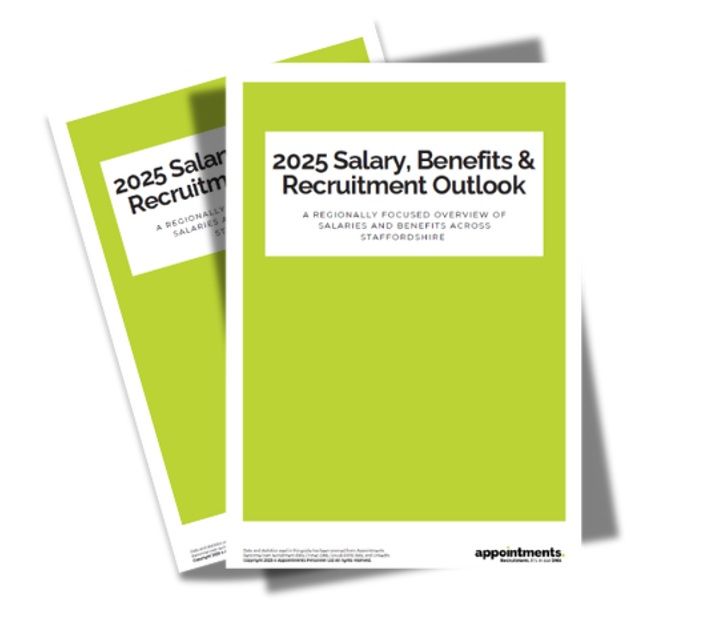
Share Article
Listening to your employee voice improves engagement and retention
Employee voice is a key enabler of effective staff engagement. Employees who feel respected, engaged with, listened to, and invited to contribute their ideas and experience are more likely to stay motivated and stay with you.
In the current context where labour shortages are inhibiting some businesses from growing and reaching their full productivity potential, it is especially important to engage with your employees to create a common purpose. This will help you to retain your employees and get the best from them.
If employees’ voices are heard and responded to, they are more likely to understand the changes you might propose and have ideas about how to improve the current processes. As a result, employees will feel valued, leading to greater job satisfaction.
This blog, initially published by the REC, looks at the employee voice and how you can make sure you benefit from the input your employees can give you and make sure they feel heard.
What is employee voice?
Employee voice is how people communicate their views to their employer and influence matters that affect them at work. It can include everything about the business, from organisational strategy, terms and conditions, to the working environment. It can also include telling you when something’s wrong.
It helps to build open and trusting relationships between leaders and employees and managers and their teams.
Evidence also shows that employee engagement can lead to workplace innovation and improved productivity. It is also vital to securing a safe working environment. If employees feel confident about alerting you when things go wrong – or are about to go wrong – they will help keep your organisation on the right path.
In a diverse workforce, it is essential that all staff feel valued
Research shows a strong link between how well organisations listen to their employees and how well they manage innovation in working, change, and creating a sense of fairness. For example, 57% of organisations say they use the information they get from listening to their employees to improve their performance. But this means that one in four businesses say they don’t make use of this valuable resource.
Critically, those who improve performance by listening show significant differences in their ability to generate good ideas to work effectively (38% more positive), manage change successfully (36% more positive) and treat everyone fairly (35% more positive).-
– Who’s Listening? From Measurement to Meaning, Krais, H., Pounsford, M., Ruck, K. Couravel, Spring 2021
How employee voice can be effective
To be effective, employers must listen, acknowledge, and respond. This requires recognition and respect to enable ongoing dialogues with staff to ensure every voice is heard.
A positive workplace culture allows employees to speak openly and honestly without fear of reprisal or victimising. It also requires effective internal communications. For example, employees can contribute to discussions when they are informed about the organisation’s plans, projections, and challenges.
It’s important to seek your Employees’ views early,make sure they are followed up and give explanations if ideas don’t move forward.
Mechanisms to listen well
Employee voice can be sought through collective mechanisms, where we hear it through representatives:
- Trade unions – according to the 2020 Labour Force Survey, 23.7% of UK employees are members of a trade union. This model is most prevalent in the public sector. Working with trade unions can be highly effective, mainly where organisations develop a positive model of partnership working and mutual trust and respect. Some organisations work with both a trade union and an employee forum.
- Employee forums or works councils – they offer representation for all employees.
- Information and consultation bodies of elected employee representatives – they consult over changes such as redundancies or TUPE.
- Self-organised employee networks – they can include groups for employees who are parents or carers, have a disability, are women, are from a minority ethnic background, or are LGBTQ+ to give a voice to minority groups and those with protected characteristics.
Case study: Employee voice in B&Q – the People’s Forum
The People’s Forum is a fully elected body that covers all B&Q colleagues. Each store elects a retail team representative, and there is a further election process for a regional representative for store colleagues to go forward to the National People’s Forum (NPF). Retail management colleagues also elect representatives for each region, and head office staff elect representatives from each business function.
Once elected, the National People’s Forum representatives receive independent training as part of a two-day induction meeting. In addition, the organisation provides equipment – an iPad – to help them perform their role and ongoing support from the HR Team.
The National People’s Forum meets regularly with the B&Q Board. The B&Q CEO says: “Through the support of the leadership team and sponsorship from the Main Board, representatives will be in a position to not just contribute to but also influence decisions that are being made.”
Set up mechanisms to hear from employees directly
You can also use mechanisms to hear from your employees directly. Here are some examples you could adopt in your workplace:
- Employee surveys – management should take employee surveys seriously, share results with employees (including disappointing ones), and take action.
- Focus groups or listening groups – employees can define issues, such as exploring the reasons behind employee survey results or examining organisational failures or challenges.
- Skip-level meetings – they enable senior managers to hear the views of teams directly.
- All-colleague briefings and leader-led town hall meetings – they should open to questions from the floor.
- Open or guided access to internal communications channels – for example, an in-house intranet, eNewsletter or social media tool.
- Line management meetings – managers can cascade information from leaders down and employee views and feelings upwards.
Confidential hotlines and whistleblowing policies
Research has found that surveys are the most dominant tool for listening, while people use numerous other valuable approaches much more sporadically. 59% of organisations still use a large-scale employee survey annually and consider surveys the most insightful listening tools. Organisations rarely use qualitative methods like interviews and focus groups (face-to-face or online), even though they could be helpful to get to know issues beneath the surface.
The same research found that digital listening appears to be overlooked and needs to be used more. For example, although 53% of respondents thought employees were more comfortable sharing ideas on digital platforms, only 26% thought managers were comfortable listening via digital platforms. In addition, 58% of organisations using listening methods never or rarely monitor discussions on digital platforms.
Other examples of direct employee voice mechanisms
Examples of direct employee voice mechanisms organisations are using:
- Online employee engagement surveys ask employees what they think about the organisation and aspects of working life, often with an option to include text comments.
- Regular face-to-face meetings, where senior leaders tell groups of staff about changes and developments in the organisation and invite them to ask questions, express concerns, share their ideas and ask for volunteers to be involved in further thinking and discussions.
- “Ideas Street” is a more modern version of the suggestion box. Employees can post their ideas online so all colleagues can see, comment and vote on them, which progress to further consideration if they attract enough support.
- “Big conversations” invite the whole organisation to discuss a topic in small groups through an organised series of conversations based on questions that all staff discuss. Comments and ideas are collected, and the conversation develops in response to the feedback received.
- “Graffiti walls” – official ones, opened for a period which invite views and comments on a particular theme. Staff can write what they think, and colleagues can see what everyone has written and add their comments.
- “World Café” events invite attendees to hold a conversation over a series of tables. First, attendees discuss one topic, where one or two facilitators help keep the conversation flowing and take notes, often on paper covering the whole table so that everyone can visualise their contribution. Then, at regular intervals, attendees move round the room to another table and another part of the conversation.
- “Frontline Forum”, where a senior leader gathers a representative group of frontline staff to listen to issues that concern them and discuss and work through possible solutions.
- “Solutions Groups” draw on employees’ experience to empower them to develop solutions to a problem or challenge.
- “Employee Engagement Supporters’ Networks”, where interested employees play a significant role in supporting their managers and colleagues in engaging activities to improve collaboration.
Employee voice represented at board level
There are mechanisms specifically designed for employee voice to be heard at the Board level, as required by the Financial Reporting Councils UK Corporate Governance Code for FTSE350 companies:
- Employees appointed to the Board of Directors (also sometimes called Worker Directors).
- Non-Executive Directors (NED) tasked to understand and report to the Board on employee views.
- An Advisory Panel drawn from employees across the organisation and often reporting to the Board through the designated NED.
The role of leaders
Successful leaders demand to know as much about how their employees feel as they do about investors.
Leaders need to know the temperature of the organisation and the hot topics. Therefore, it’s a key responsibility for line managers to cascade views up and information down. Make sure you have mechanisms in place to make sure the communication is a two way process. Leaders need to know what’s happening in the organisation before anything goes wrong. It is good to know the reality within the organisation before it appears on Glassdoor.
Leaders are significantly more important than line managers when delivering outcomes from listening. Line managers may not have it within their remit to resolve an issue, whereas leaders are able to make sure feedback is followed up by the right department. Research that asked employees to evaluate how responsive their managers were, and how responsive leaders were, found a much stronger association between leaders’ (vs line managers) responsiveness and key outcomes.
Why is trust important?
Remember, employees will not give their views honestly and openly if they don’t trust the recipient, whether it’s their line manager or a senior leader. Encouraging employees to speak up should be seen as part of the day job for managers and leaders to keep the organisation honest and authentic.
Organisations need to create a culture where speaking out is the right and safe thing to do for the good of the organisation and all its employees.
Your employee voice is the cheapest smoke alarm you can have in your organisation. But unfortunately, things often go wrong in organisations; the issue is whether you catch them before they build up to a major crisis and do significant or lasting damage. Recently, we’ve all witnessed important private and public sector organisations rocked very badly by disclosing issues which could have been dealt with if caught earlier.
Are you listening to your employee voice?
Unfortunately many organisations think they listen better than they do.
For example, more than 70% of respondents to a recent research study agreed that their organisations take employee views seriously, have open mindsets when listening and are willing to listen.
And yet, when responding to practical questions like planning to listen, ensuring leaders listen, and responding to feedback, the responses fall well below 50%.
Conclusion
Listening to employee voices is crucial to the success of any type of business, large or small and in any sector. In the current labour market with businesses struggling to recruit to key roles resulting in stalled growth plans, it is especially important to engage with the employees you have to create a common purpose. Not only does it help retain people and but you’ll get the best from them too. Many employers say that their employees are their greatest asset, but they don’t always listen to what their people have to say. So this blog is a good reminder of why it is ‘important to put the people stuff first’.
A continuous dialogue and feedback loop between employers and staff should help stem disputes and create a sense of empowerment and ownership around driving success and overcoming challenges. Keeping staff by listening to their needs and attracting sought-after talent to your organisation by being an employer that listens to its people is an easily attainable win.
Contact us if you have any feedback on this blog or want more support to retain your staff.
Source: Data taken from REC










